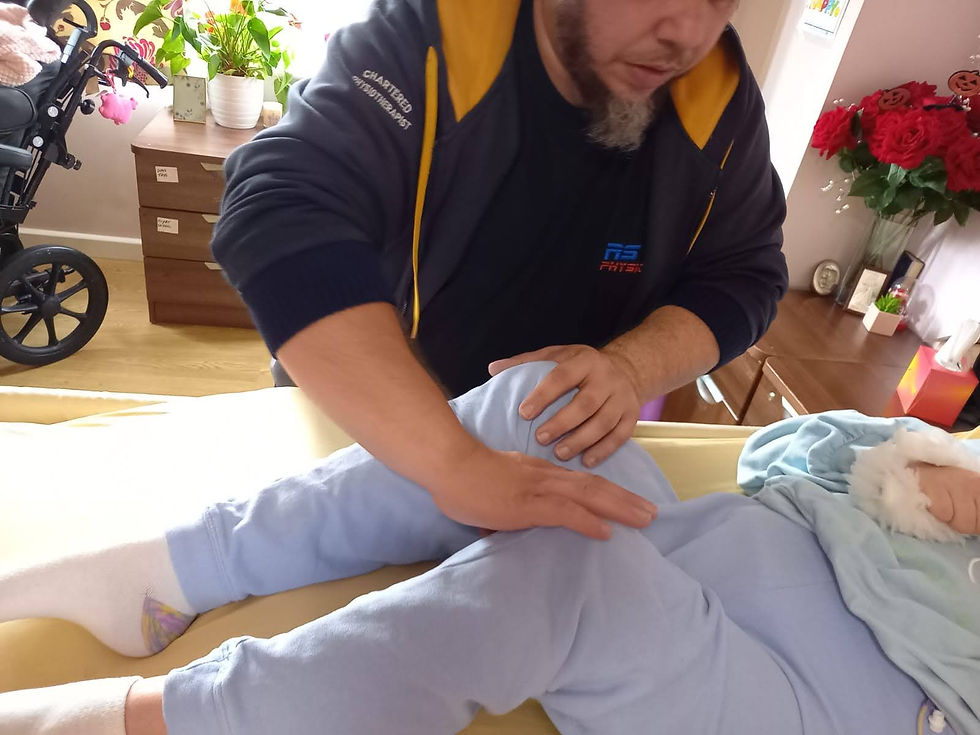A Shift from Dependency to Empowerment - R.Lupton's Book Model in Physiotherapy
- Pawel Ciecierski MSc Physiotherapy MCSP HCPCreg

- Jul 23, 2023
- 4 min read
Updated: Aug 1, 2023

As a seasoned physiotherapist, I've often sought knowledge from various disciplines to enhance my understanding of patient care. Recently, I stumbled upon the book "Toxic Charity: How Churches and Charities Hurt Those They Help" by Robert D. Lupton (2011).
While the book primarily focuses on the pitfalls of traditional charity models, it struck me that Lupton's principles could apply to many other fields, including physiotherapy.
Lupton outlines a continuum, starting with appreciation and leading to dependency, explaining how charitable giving could unintentionally disempower those it aims to assist. It made me wonder: Could physiotherapy patients follow a similar trajectory?
From Appreciation to Dependency in Physiotherapy
In the initial stages of a rehabilitation program, patients appreciate the relief from pain and improvement in mobility (1). This stage of "appreciation" could be seen as the "honeymoon period" of the therapeutic process.
As treatment progresses, patients begin anticipating the benefits of each session. This "anticipation" could inadvertently lead to a diminished commitment to prescribed exercises
and a growing reliance on therapy sessions for relief (2). A common argument I hear is, "When I do these exercises myself, they don't feel the same." Understanding that it's about doing them, not about doing them perfectly every single time, is important. We are designed to move, and physiotherapy is one tool to ensure we keep moving.
If not addressed, this anticipation can shift to an "expectation" of relief from the physiotherapist, undermining the patient's role in their recovery (3). This is so common that many patients wait for a miracle to occur just from their participation, demonstrating a lack of understanding of their own role in recovery.
Eventually, this expectation can turn into "entitlement," where patients may feel they have a right to their physiotherapist's care, neglecting self-care activities such as home exercises and lifestyle modifications (4). This isn't a universal occurrence, and I don't observe this stage in my private practice to often. However, it's commonly observed in the public sector. Therapists become an absolute necessity and often get blamed for the lack of progress in therapy. Many patients forget about systemic limitations and the current healthcare crisis. At the same time, therapists, due to being overworked, know that the service they offer may not meet needs and is less likely to yield the expected results.
That's how we get to the final stage, "dependency". It occurs when patients become so reliant on their physiotherapist or the healthcare system that they feel, or indeed are, unable to manage their conditions independently (5). This stage starkly contrasts with the goals of physiotherapy, which aim at patient empowerment and self-management (6).
A Shift Towards Empowerment
This progression from appreciation to dependency underscores the crucial need for physiotherapists to understand the potential impacts of their interventions on patients' lives.
Just as Lupton advocates for a charity that promotes self-sufficiency, physiotherapists must emphasize rehabilitation programs that empower patients and avoid fostering dependency.
Education provided by therapists is crucial for patients to understand the whole process of rehabilitation. Only this understanding can guarantee or at least give some chance of adherence to therapy. To achieve this, a deep reorganization of the current "10-minute sessions" per patient must change. Understanding the limitations of the system and encouraging cooperation between the public and private sectors is key in the current climate.
We must stop brushing problems under the carpet and making them "somebody else's problem" (a term I learned from my physiotherapy assistant when I started working for a charity many years ago).
Long-term preparation for change must start now, otherwise, there will be no effective interventions, and young physiotherapists will just replicate the culture of physios who don't do physiotherapy.
Open discussion about the process of rehabilitation, both short- and long-term, is essential. Helping patients comprehend their roles in maintaining progress and managing symptoms can reinforce the essence of physiotherapy - restoring and enhancing patient mobility, function, and quality of life, and much more through their active participation (7). Remember that our interventions are effective and reduce the number of hospital admissions, surgical revisions, and death rates.
If you're a physiotherapist reading this - review your practice and rethink your intervention.
If you're a patient - fight to avoid becoming dependent on the system. Treat your physiotherapist as an expert, extract maximum information from them, and take the driver's seat in your recovery using the physiotherapist as your Co-Pilot. A passive approach won't make your goals magically appear. Keep active, expect more from your physio, or change services if unhappy. The clock is ticking.
References
1. Lupton, R. D. (2011). Toxic Charity: How Churches and Charities Hurt Those They Help. HarperOne.
2. Jansons, P. S., Haines, T. P., & O'Brien, L. (2017). Interventions to improve adherence to exercise therapy for falls prevention in community-dwelling older adults: systematic review and meta-analysis. Age and Ageing, 46(3), 372-380.
3. Campbell, R., & Evans, M. (2019). Patient adherence to physiotherapy rehabilitation: a systematic review. Physiotherapy Theory and Practice, 35(11), 1011-1025.
4. Zebis, M. K., Andersen, L. L., Pedersen, M. T., Mortensen, P., Andersen, C. H., Pedersen, M. M., ... & Aagaard, P. (2016). Implementation of neck/shoulder exercises for pain relief among industrial workers: A randomized controlled trial. BMC Musculoskeletal Disorders, 17(1), 1-11.
5. Sluijs, E. M., Kok, G. J., & van der Zee, J. (1993). Correlates of exercise compliance in physical therapy. Physical Therapy, 73(11), 771-782.
6. Jack, K., McLean, S. M., Moffett, J. K., & Gardiner, E. (2010). Barriers to treatment adherence in physiotherapy outpatient clinics: a systematic review. Manual Therapy, 15(3), 220-228.
7. WHO (World Health Organization). (2019). Rehabilitation 2030: A Call for Action.





Comments